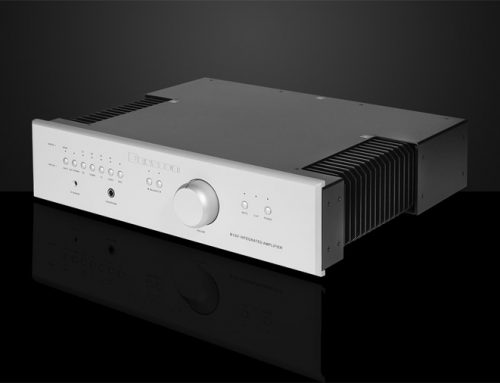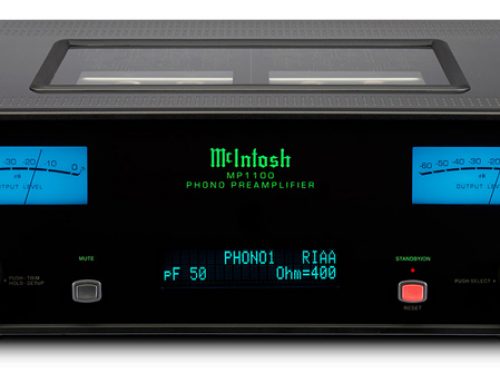
Hi-fidelity audio is often associated with multiple, large speakers but high quality sound is also available in a more portable, personal package. Earphones and headphones can be a great alternative for personal listening when budget, physical space and or noise levels are a factor. There are a wide variety of personal listening devices to suit every lifestyle, budget and application.
Headphones and earphones can create immerse, accurate sound that rivals that of expensive loudspeakers because of several factors. First, they do not have to produce very high decibel output which allows them to be smaller, require less power and cost less to manufacture. Analogous to digital cameras, if all you need is a 4”x6” print, a 2 megapixel camera will produce usable results but if you need a 12”x18” print, you’ll need a 20 megapixel camera. Secondly, headphones and earphones are less affected by acoustics. Since most head/earphones are isolated from outside noise and transmit sound directly into your ears, they aren’t affected by room acoustics, reverb and other “outside” factors.
There are two main categories of personal audio: earphones and headphones. With earphones (often called earbuds), there are those that sit in the outer ear (pinna) and “canalphones” which are inserted into the canal of the ear. Headphones are divided into circumaural, which have pads that completely surround the outer ear, and supra-aural, which have pads that just sit on the outer ear. Circumaural headphones are either open-back (or open-air) or closed-back. Each of these different types of personal listening devices has its pros and cons, as well as a variety of different price points depending on quality, material and other factors.
Earbuds are the most ubiquitous and are typically bundled with everything from MP3 players to smartphones. Indeed, the “white earbuds” worn by many commuters have become the most familiar symbol of personal audio – though no audio enthusiast (or CANADA HiFi reader, hopefully) would ever use the stock earbuds that come with their iPod or MP3 player. Quality earbuds come in a variety of styles, start at $10 and are available to suit every need, budget and style. For example, sports earbuds have clips that hook around the ear, ensuring a snug fit while jogging while other earbuds sit behind the neck, come with built-in radios or have volume controls, microphones and remotes for use with cell phones and MP3 players. Earbuds, however, are typically the simplest (and cheapest) level of personal audio and are also limited in quality and frequency response. Earbuds are available from Skull Candy, Pioneer, Sony, and a number of other manufacturers.
The other type of earbuds are canalphones, or inner-ear earphones. These earphones are inserted into the canal of the ear and typically come with silicone, rubber or foam flanges/tips to ensure a comfortable, snug fit. The main advantage of canalphones is the noise isolation that comes with sealing off your ear canal from ambient noise. This noise isolation is useful for both sound quality and when listening in an environment that isn’t quiet such as public transit or when flying. Canalphones were originally made for stage/live artists to both protect their hearing from the high decibel stage as well as to allow them to hear the band/music and their fellow musicians. For an even more personalized fit, you can visit an audiologist or hearing centre and have custom moulds made for your ears. They usually start at $50 each and ensure the most exacting fit. The average ear grows 1/100th of an inch a year so you shouldn’t have to replace your custom moulds often. Canalphones are usually more expensive, but offer better sound and frequency response. Canalphones are available from Sennheiser, Shure, Pioneer, Klipsch, Etymotic, Ultimate Ears, and Westone, among others. Pricing starts at $20 for generic fit, Skull Candy canalphones to $400+ for triple-driver (independent bass, mid, treble drivers) Westone W3s.
In contrast to the more portable earbuds, headphones are the other side of the coin. Headphones require more power to drive (and hence aren’t as suited for portable audio players) but are typically cheaper than similarly capable canalphones in the same way that desktops are cheaper than similarly capable laptops (smaller electronics are more complex and expensive). Of the two styles of headphones, supra-aural headphones are cheaper and sit on top of the outer ear. They are less expensive but don’t offer good ambient noise isolation, adjustability, or fit. These have largely been displaced by earbuds, canalphones and circumaural headphones which completely cover the outer ear.
Circumaural headphones are further subdivided into closed-back and open-back/open-air. The former offer noise-isolation qualities similar to canalphones and are standard for DJs. The closed design ensures only the listener hears what is being produced but can affect the sound quality in lower quality headphones similar to the negative effect created by cheaper cabinet materials resonating/distorting the sound in loudspeakers. They can, however, deliver better bass than their open-back counterparts. Closed-back earphones are available from Sennheiser, Grado, Beyerdynamic, Ultrasone, Audio Technica, Denon, and others at a wide variety of price points from $30 to $300+.
Open-back earphones, sometimes called “vented” headphones, are not sealed and as such, lack the noise isolation qualities of closed-back headphones. The open design reduces the reflections/resonance of closed-back headphones and creates a more open, natural soundstage leading to more accurate sound reproduction. Obviously, this also allows sound to “leak” out the back of the headphones and ambient noise to leak into the headphones making them ill-suited for noisy or public environments. Many of the manufacturers that make closed-back headphones also have open-back offerings.
One headphone manufacturer, Ultrasone, has also introduced “Ultra Low Emission” magnetic shielding into their headphones. They claim the metal shielding protects the wearer from 98% of the electromagnetic emissions generated by the drivers. While the jury’s still out on the long-term effects of electromagnetic emissions on human physiology, with evidence on both sides, reviews of Ultrasone’s headphones show no discernable effect on sound quality due to the extra shielding making the feature a useful “better-safe-than-sorry” addition.
For quality headphones, it is highly recommended that they be driven by a dedicated headphone amplifier. The headphone jack on an AV receiver often cannot drive high-impedance headphones, reduces the dynamic range of the output signal, lacks the sensitivity for a low-powered signal or introduces noise. Fortunately, headphone amplifiers are (relatively) inexpensive when compared to other audio components and there are many DIY projects with full schematics for the electronically inclined.
It is important to note that headphone amplifiers should always be connected to the tape-out or preamplifer outputs of a source. The signal from these outputs is non-variable and not affected by volume, equalizer or DSP settings on the source, which ensures the cleanest, unaltered signal passes through to the headphone amplifier. Pass-through outputs also have the same effect.
Beyond “standard” headphones, there are now a plethora of options and features. Bluetooth, RF and infrared capabilities allow for wireless listening; DSP-equipped headphones can produce a virtual surround sound effect; and powered, active noise-cancellation headphones can help in noisy environments.
If you’re looking for the freedom to walk around your house at inappropriate hours with headphones on, wireless headphones may be the solution for you. They’ll let you listen to music anywhere inside and even outside your house, regardless of where your stereo is located. They are available in both circumaural and supraural designs. Wireless headphones transmit sound using the radio frequencies (RF) of 900 MHz, 2.4 or 2.8 GHz and are generally heavier than other pairs of headphones because they have built-in batteries. The headphones will typically function from 4 to 23 hours on a single charge (depending on the battery type) and the RF transmitter generally doubles as a recharging station. The range of wireless headphones is between 10 to 100 meters from the RF transmitter.
The latest technology to come to the world of headphones is the Dolby Headphone format. This technology is actually found in today’s receivers, not headphones. The Dolby Headphone algorithm takes any multi-channel audio source (up to 5-channels) and processes it to add all sorts of spatial cues and ambient effects through simulated direct and reflected sounds. It outputs a two-channel audio signal that is reproduced through any pair of conventional headphones and allows you to listen to music, watch movies and play video games while enjoying the sound effects of a 5.1-channel soundtrack. In order to experience the Dolby Headphone format, your receiver or DVD player must have the capability to decode it. A few DVDs also come with pre-encoded Dolby Headphone soundtracks in which case hardware decoding is unnecessary. Special editions of Pearl Harbor and T2: Extreme DVD are a couple of movies that have these soundtracks included. As with any other sound formats, you can usually tell if the hardware can decode this format by looking for the Dolby Headphone logo on its front panel. Home theater receivers from Harman/Kardon, Denon, Marantz and Kenwood are some of the latest home theater products to offer this technology.
But Dolby Headphone decoding isn’t limited to home theater equipment. It can also be found in personal computers, mp3 players and portable DVD players. Eventually it will probably make it into most electronic products.
Whatever your listening requirements and budget, there are personal listening devices available to fill the need. Make sure that the fit is comfortable, keep the volume level to a reasonable decibel to prevent hearing damage and enjoy your own private listening experience.





